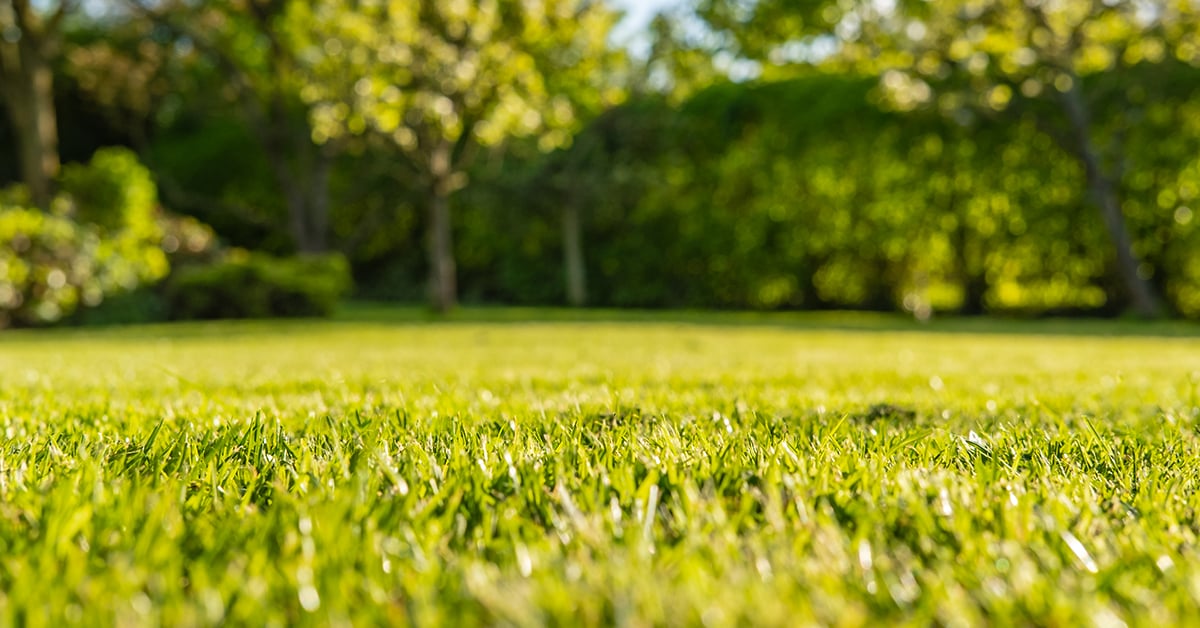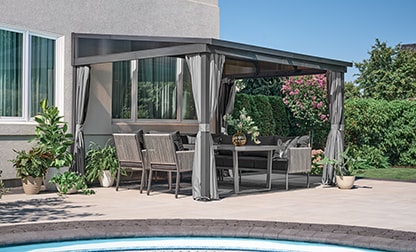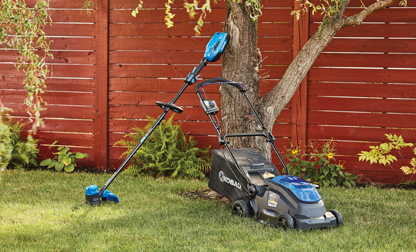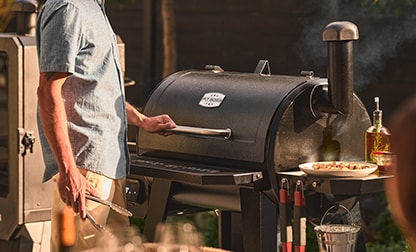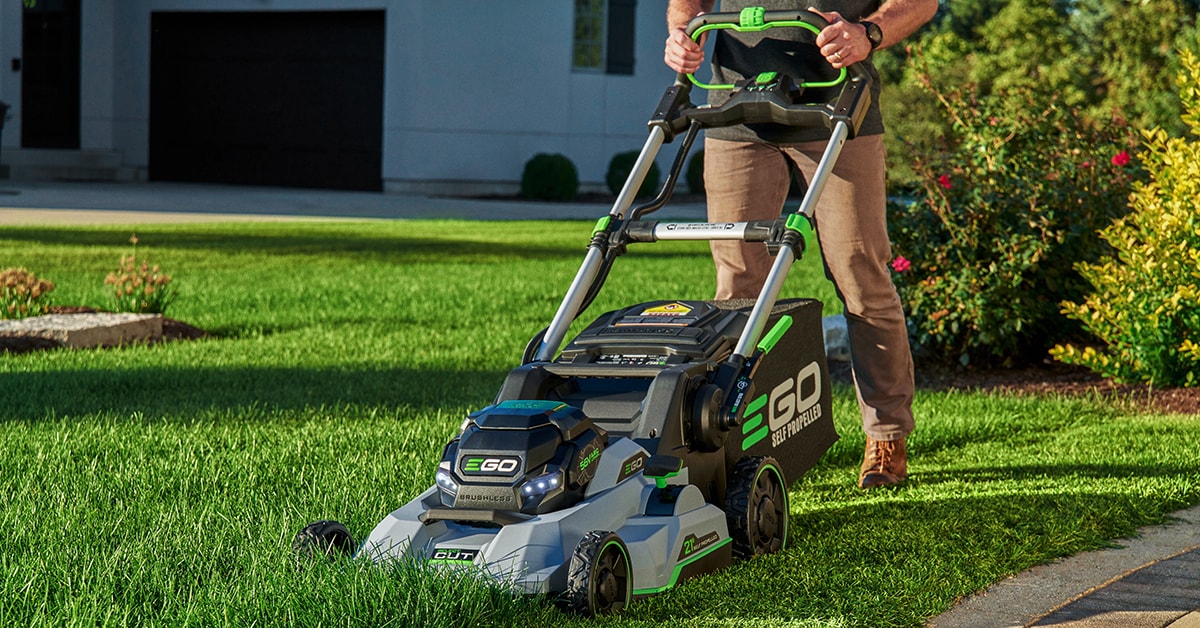
Updated on April 26, 2024
Choose the Right Lawn Mower
We typically mow the lawn up to 20 times each season. With so much effort spent to benefit from a good-looking lawn, selecting the right lawn mower for your space and your lifestyle is essential. Consider factors such as lawn size, terrain, and personal preferences to find the right model.
Pro Tip
You know it’s time for a new mower when your current machine is hard to start, inefficient, or lets off a lot of fumes.
Different Types of Lawn Mowers Available

Gas Lawn Mowers: Superior Power
Electric Lawn Mowers: Light and Quiet

Cordless Lawn Mowers
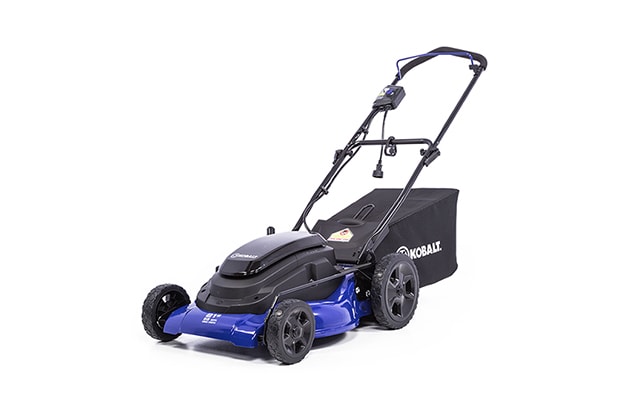
Corded Electric Lawn Mowers
Comparison Table
Still can’t make up your mind? Here’s a table to help you compare the two types of lawnmowers:
|
Pros |
Cons |
|
|
Gas Mower |
|
|
|
Electric Mower |
|
|
Push-Reel Lawn Mowers: the most Eco-Friendly Choice

Lawn Tractors: Next-Level Comfort and Power
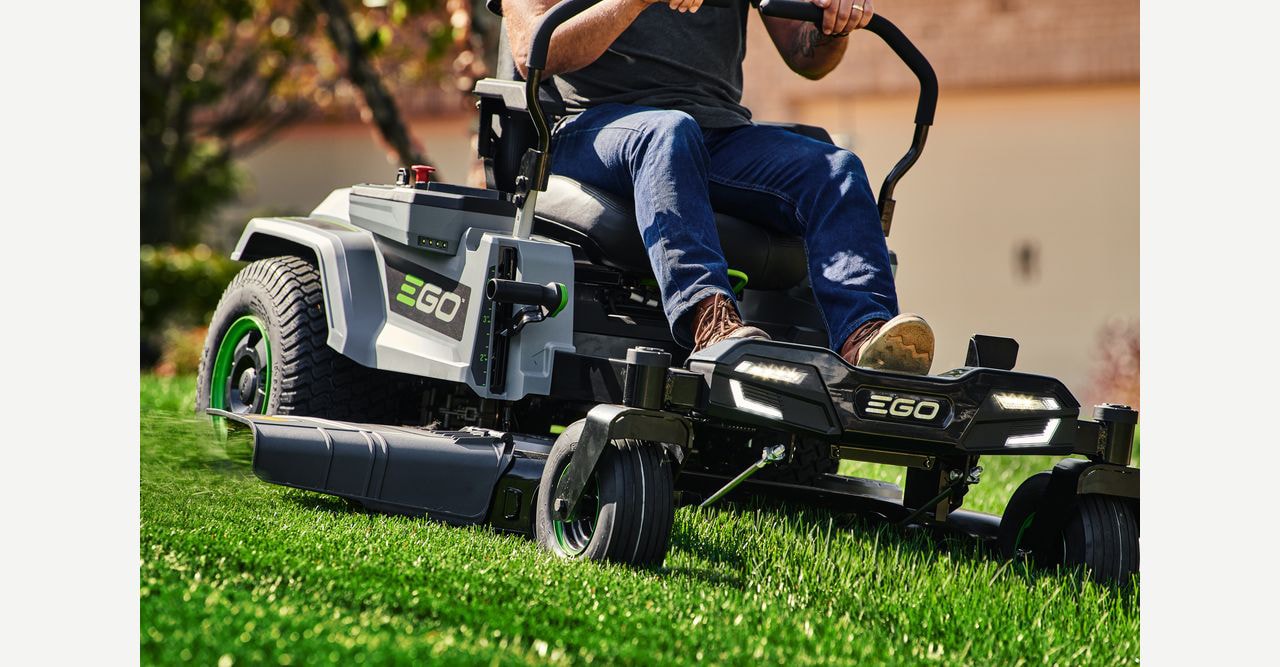
Advantages of Using a Battery-Powered Lawn Tractor
An increasingly popular option, battery-powered lawn tractors offer several advantages:
- Reduced environmental footprint. Battery powered lawn tractors produce no harmful emissions.
- Quiet operation. Electric lawn tractors can often be used in noise-sensitive areas, such as residential neighbourhoods and recreational areas.
- Savings in fuel consumption. You can save money in the long run by using electricity, which is generally cheaper than gasoline.
- Ease of use and versatility. Electric lawn tractors are generally easier to start and operate. There’s no need to stock or handle fuel!
- Low maintenance. Fewer moving parts and a no-gasoline engine mean less maintenance, which in turn reduces service appointments and costs.
- No odours or leaks. No more gas smells or potential leaks.
- Instant start. The battery eliminates the waiting time associated with starting gasoline-powered models.
- Excellent autonomy. Advances in battery technology now offer greater autonomy, enabling you to mow large areas without having to frequently recharge.
Did You Know?
Choose the Right Mower for the Job
Ask yourself the following questions to identify your needs:
- How large is your lawn?
- Is the terrain uneven or hilly?
- How much effort do you want to put into cutting the grass?
- How often do you plan on mowing the lawn?
- Would an electric start be preferable over a traditional pull cord?
- Are noise and exhaust a problem for you or your neighbourhood?
- How much storage space is available for a mower?
|
Lawn Size |
Minimum Recommended Mower Type |
Time |
Maintenance |
Tips |
Storage |
Noise/Eco-friendly? |
|
½ acre and larger (21,780 sq. ft.)
|
Lawn tractor |
+1 hour |
Yearly tune-up; may require professional care. |
High initial cost, more difficult to use and to maintain. |
Uses a large amount of space in a garage or shed. |
Loud, emits exhaust, uses gas and oil. |
|
½ acre (21,780 sq. ft.)
|
Gas mower |
1 hour |
Conduct all maintenance yearly. Sharpen blades. Check the spark plugs. Change the oil and filters. Drain the fuel and mix in a stabilizing additive. |
Consider purchasing a self-propelled version for larger lawns. A variety of cutting widths are available. |
Must remain on the floor of the garage or shed and takes up 4 square feet. Some models have handles that fold down for compaction. |
Loud, emits exhaust. Four-cycle engines emit less pollution than two-cycle ones. Uses gas and oil. |
|
½ acre (21,780 sq. ft.) |
Large electric mower |
1 hour |
Clean housing, sharpen blades yearly. |
Select a version that has a cord long enough for the lawn size. Varieties of cutting widths are available. |
Can be attached to a hook in the garage or shed. |
Quiet, no exhaust, uses electricity. |
|
⅓ acre (14,374 sq. ft.)
|
Cordless (battery powered) mower |
30-60 minutes |
Clean housing, sharpen blades yearly. |
Battery will need to be recharged after 30-60 min. Varieties of cutting widths are available. The batteries need to be replaced every two years. |
Can be attached to a hook in a garage or shed. |
Quiet, no exhaust, uses electricity. |
2,000 sq. ft. or less |
Push reel (manual) mower |
45 minutes |
Sharpen blades every three years. Clean and dry unit regularly. |
Uses the greatest amount of effort and exercise. Cutting width options are limited. |
Easiest to store because of its light weight; can be attached to a hook in a garage or shed. |
Quiet, no exhaust, uses human effort. |
Pro Tip
Different types of lawn mowers come with different types of warranties. Both gas and electric mowers usually have 2-5-year warranties. Electric starters have special warranties. Plastic decks typically have lifetime warranties.
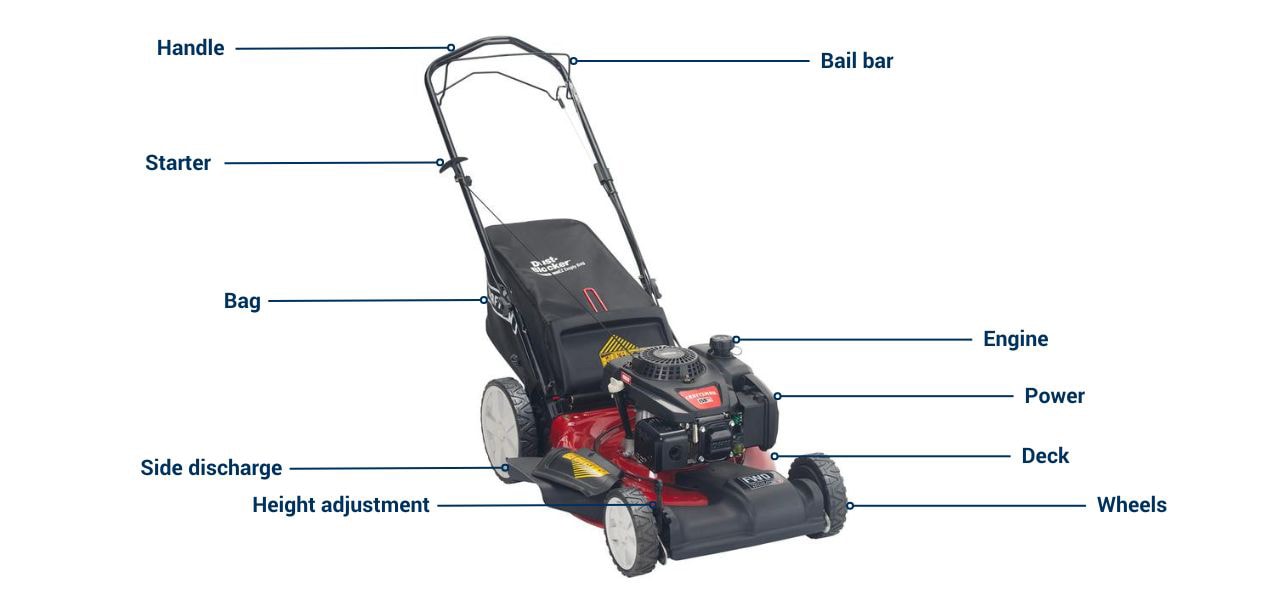
Understand Your Lawn Mower
Deck. The wider the deck size, the wider the blades, and fewer passes are needed to cut the entire lawn. Apart from size, decks come flat or domed, metal or plastic. Domed hood decks allow more room for the blades to efficiently chop the grass clippings. While metal lasts longer, plastic does not corrode or rust.
Blades. Blade sizes and types vary regardless of the type of mower. Blades are designed to either cut or mulch between 1-4". Cutting blades require the use of bags to gather grass, whereas mulching blades grind the grass during the mowing so that it can compost quickly into the lawn. It is recommended to sharpen blades yearly. Push reel mowers have limited blade widths and need to be sharpened every few years.
Wheels. The 4-wheel adjustment option is recommended regardless of the type of mower selected. The larger the wheel size, the easier the manoeuvrability. Also, larger wheels in the rear make the mower easier to push. Innovations such as ball-bearing wheels, pivoting wheels, and PVC-wrapped wheels are available.
Motor. The type of motor varies with either gas or electricity fuel.
For gas engines, the power is measured by foot-pounds (ft-lb) of torque or cubic centimetres (cc) of cylinder size, depending on the manufacturer. Torque typically ranges from 5 to 7.5 ft-lb while cylinder (cc) size ranges from 125-190.
Gas motors come in either 4-cycle or 2-cycle versions:
- The 4-cycle engine is more commonly selected based on its lower levels of pollution, greater durability, and its lower noise levels. The oil should be changed every 25 hours of usage, which translates to 1-2 times a year.
- Gas motors with 2-stroke engines are designed for heavily inclined terrains and are therefore less commonly selected. Maintenance is easier because the engine is mechanically simpler with a gas/oil mixture. Though noisier, this engine will typically last longer than its 4-stroke counterpart. 2-stroke gas mowers are lighter than 4-stroke but emit more exhaust.
For electric engines, the size varies from a small 7-amp motor to one as large as a 17 amp, with the amperage serving as an indicator of the motor’s power level. Larger motors are longer-lasting, heavier, and can handle greater loads.
Pro Tip
Electric motors need different sizes of power cords based on the motor’s amperage needs. If a 50’ power cord length is sufficient, then a 16-gauge cord is recommended. Additionally, a 100’ cord would need 14-gauge cord. Follow the manufacturer’s recommendations when purchasing a cord for an electric mower. Cordless electric mowers simply need 1-2 batteries in order to complete the lawn’s surface.
Optional Components and Functionalities
Self-propelled. The self-propelled option for a mower minimizes the hardship of cutting the grass. The ability to control the mower is greater with a push mower, yet many self-propelled models have variable speeds. Homeowners may consider a self-propelled model for larger lawns and heavier mowers. Self-propelled lawn mowers are available as either front or rear wheel driven with front drive as the most common choice.
Electric start. Even gas mowers now have electric start options as well as all electric-powered mowers. The electric start begins either with a push button or with a key ignition.
Innovative handles. Ergonomically-designed handles are another new feature that is designed to reduce fatigue and improve control with their designed shape and adjustable height features. Many mower handles now fold down over the deck for compact storage needs. Though not new, reversible handles are also still available.
Discharge options/bags. As grass is mulched, it is usually discharged to the side. Discharge bags are available for either the side or rear of the mower’s deck; however, rear bags help to keep the mower balanced. It is recommended to use bags when cutting seedlings or after heavy rains when the clippings are too long for a mulching blade.
Safety. Various safety features are available with some new innovative options. For example, safety control switches can stop the blade while keeping the engine running.
How to Maintain a Lawn Mower
- Sharpen the blades yearly to keep grass maintained with clean cuts.
- Apply lawnmower graphite to the underside of the deck once a year to prevent grass clippings from clinging to its surface.
- Maintain clean and dry mower parts to prevent rusting.
- Always remove spark plugs before performing maintenance work on the machine.
- Regularly lubricate the wheels.
Pro Tip
While gas mowers demand more maintenance than any other type of mower, an annual tune-up will keep the mower working effectively. The oil needs to be changed regularly, and fuel additives can be added once the fuel tank is drained and refilled every year. Items such as the spark plugs and air filters need to be changed as well.
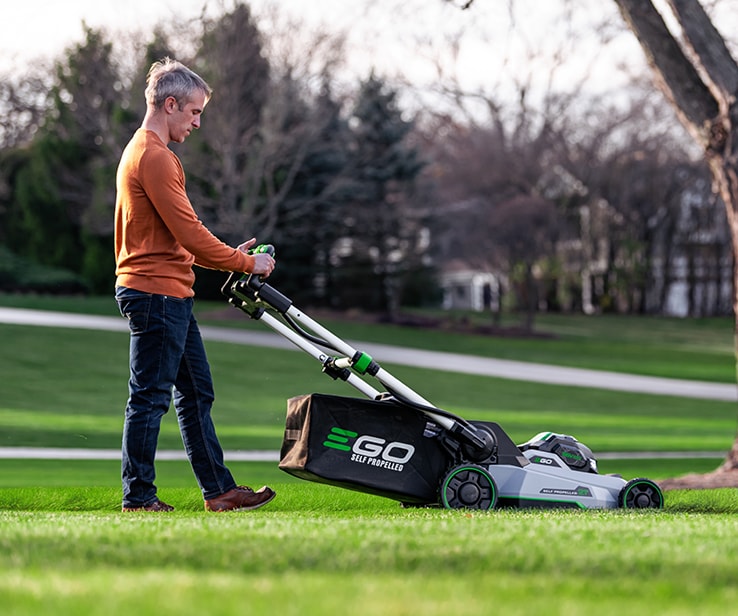
Recommended Mowing Practices
- Trim the grass no more than 1/3 of the grass blades’ overall height at a time.
- Set up a weekly mowing schedule.
- Weeds can be naturally blocked from growing if the grass blade length is 3-4” long.
- Change cutting patterns to help keep grass healthy.
- It is best to cut the grass when it is dry.
- Cutting grass on inclines and hills can be dangerous.
- Wear eye protection regardless of the project size and wear ear protection when using noisy mowers.
- Push reel mowers provide the user with a good workout. Keep in mind that users exert only 1/4 the amount of energy with a self-propelled mower than with a manual push reel mower.















